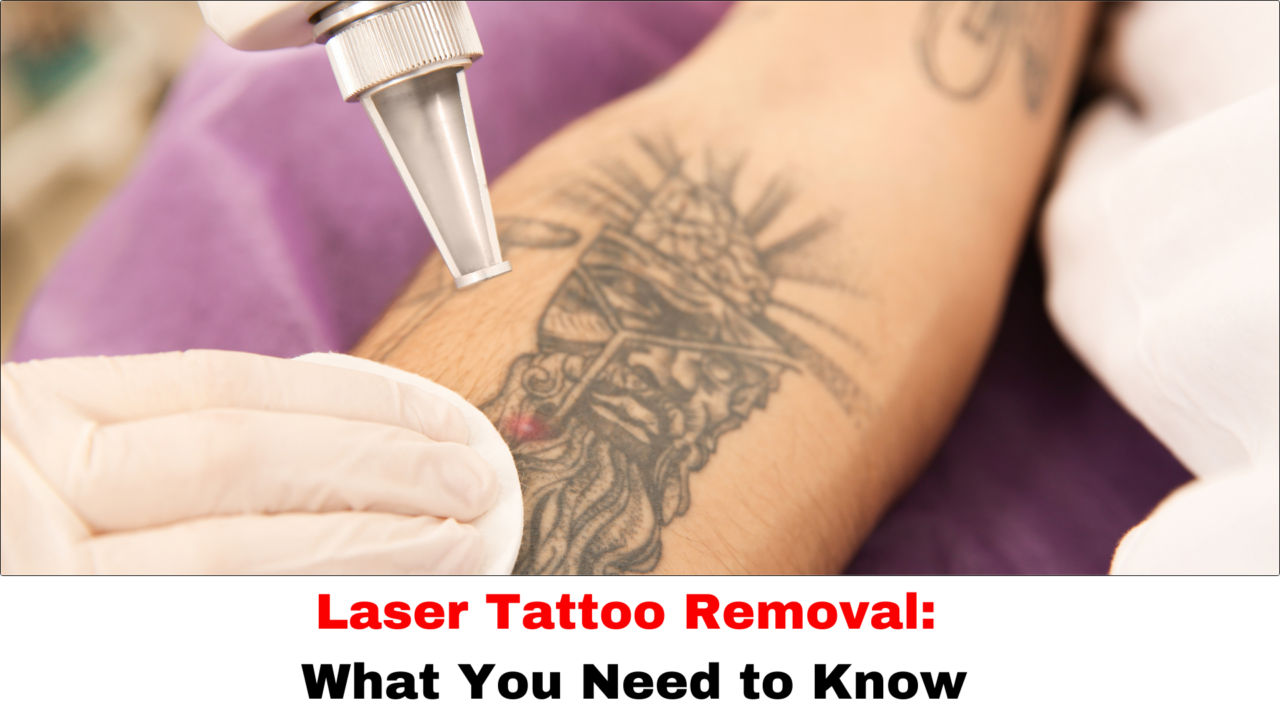Tattoos are often meaningful, but tastes and circumstances can change over time. If you’re looking to remove a tattoo, laser tattoo removal is a highly effective method. This blog will guide you through the science behind the procedure, what to expect, and how to care for your skin afterward.
How Laser Tattoo Removal Works
Laser tattoo removal is based on a fascinating principle of physics and biology. Here’s a simplified explanation of the process:
- Laser Light: Lasers emit concentrated light beams that are absorbed by the ink in your tattoo. The energy from the laser breaks the ink into smaller particles.
- Ink Fragmentation: The fragmented ink particles are then processed by your body’s immune system. White blood cells and other immune system components work to remove these particles from your skin.
- Skin Healing: As your body eliminates the ink particles, the tattoo fades over time. This process relies on your skin’s natural healing mechanisms.
Types of Lasers Used
Different lasers are designed to target various colors and depths of tattoo ink. The main types include:
- Q-Switched Lasers: These lasers use short, high-energy pulses to break up the ink. They are effective for a wide range of ink colors and tattoo depths.
- Pico Lasers: Pico lasers deliver ultra-short pulses of light, making them effective for removing all types of ink colors with fewer sessions compared to traditional lasers.
What to Expect During the Procedure
Understanding what happens during a laser tattoo removal session can help set realistic expectations:
- Preparation: The tattooed area is cleaned, and a numbing cream may be applied to minimize discomfort.
- Laser Treatment: The laser is directed at the tattoo. You may feel a sensation similar to a rubber band snapping against your skin.
- Post-Treatment: After the session, you might experience temporary redness, swelling, or blistering. Proper aftercare is essential for a good recovery.
Effectiveness and Number of Sessions
The effectiveness of laser tattoo removal depends on several factors:
- Tattoo Size: Larger tattoos generally require more sessions to remove.
- Ink Color: Dark colors, like black and blue, are typically easier to remove than lighter colors.
- Tattoo Age: Older tattoos can often be removed more easily than newer ones.
On average, 5 to 15 sessions may be needed, with each session spaced 6 to 8 weeks apart to allow for proper healing.
Risks and Side Effects
While laser tattoo removal is generally safe, it’s important to be aware of potential risks:
- Skin Irritation: Temporary redness, swelling, or blistering can occur.
- Scarring: Although rare, some people may experience scarring.
- Skin Lightening: The treated area might become lighter than the surrounding skin.
Aftercare Tips
To promote healing and avoid complications, follow these aftercare tips:
- Keep It Clean: Gently wash the treated area with mild soap and water.
- Protect from Sunlight: Shield the area from the sun to prevent discoloration.
- Avoid Scratching: Allow your skin to heal naturally without picking or scratching.
Conclusion
Laser tattoo removal is a scientifically advanced procedure that uses the principles of laser physics and biological healing to effectively erase unwanted tattoos. If you’re considering this treatment, consulting a skilled professional is crucial.
For expert care in skin treatments, including laser tattoo removal and skin tag removal, visit Dr. Shridevi Lakhe at Medi Skin Hair Clinic. If you’re looking for Skin Tag Removal Treatment in Kharadi, Dr. Lakhe offers the expertise you need.

